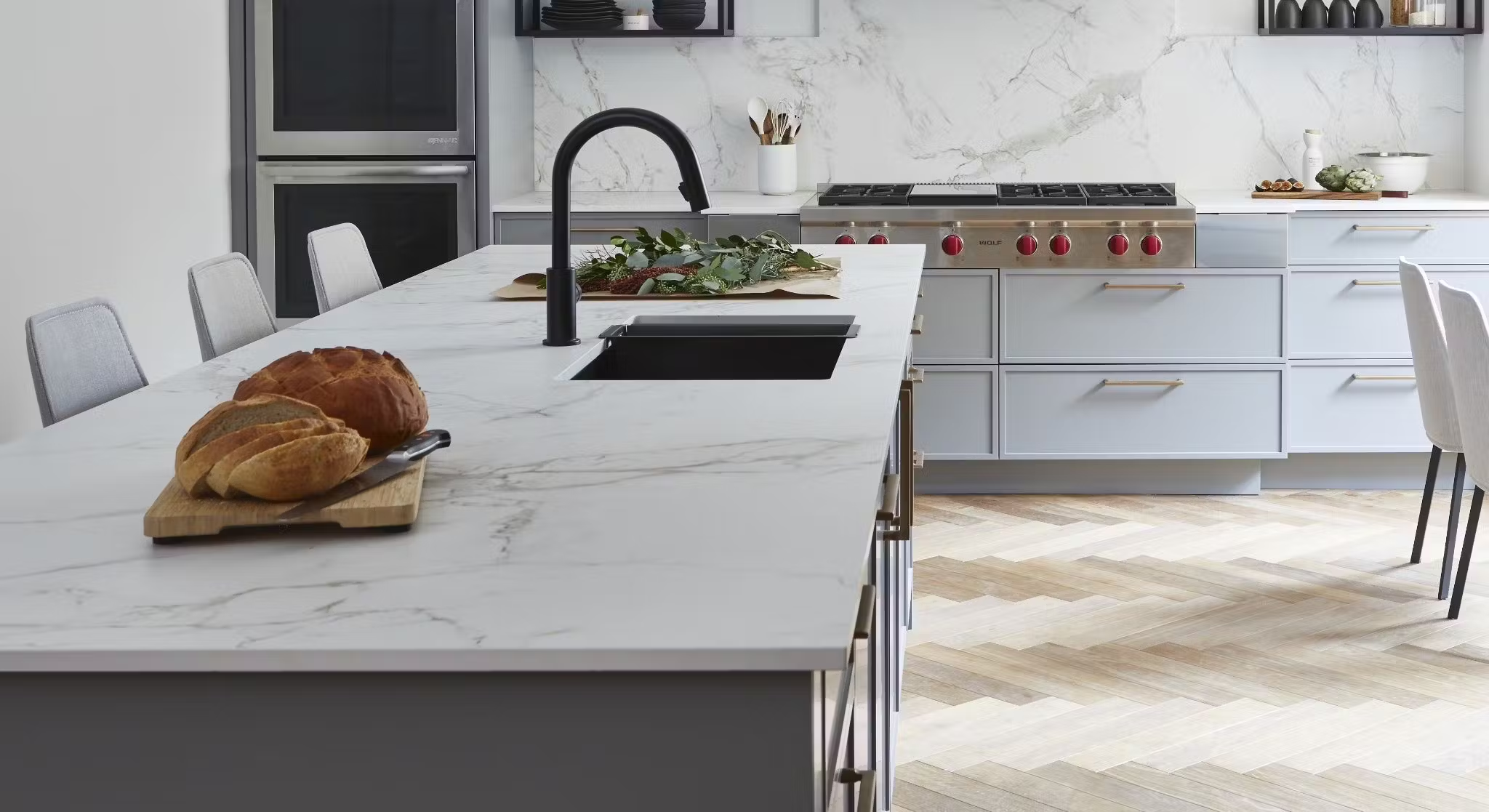What is Silestone?
It is composed of around 94% natural quartz.
This change in raw materials means that the stone has a greater variety of designs and high resistance, durability and hardness.
It is neither marble nor granite, as these are part of the natural stones and Silestone is part of the Composites.
Learn about the benefits and care of Silestone.
It is mainly used for kitchen and bathroom worktops, flooring and cladding.

Benefits of Silestone:
- It is resistant and durable, with a hardness rating of 7 on the Mohs Scale. Silestone doesn’t scratch or break, but despite being very resistant, it does require some care.
- It does not stain or absorb liquids as it is dirt and stain proof.
- It’s easy to clean. Because it is waterproof and does not allow bacteria to grow, Silestone is very easy to clean.
- Variety of colors and finishes. When choosing Silestone, you have the option of choosing different shades, from neutral to vibrant colors. You can also opt for different finishes, from smooth to matte.
How to care for Silestone:
- Do not apply hydrofuming or sealants to enhance the shine as it will become dull;
- Never leave the surface in permanent contact with bleach because it will corrode the silestone;
- Solvent and bleach can affect Silestone if they come into permanent direct contact;
- Never use degreasers like those used for ovens;
- Do not expose Silestone to high temperatures (e.g. fryers) or continuous contact with a heat source;
- Do not place pots and pans directly on the stone, use support bases;
- Never apply: Hydrofluoric acid, Dichloromethane, NaOH – caustic soda, paint strippers.

Cleaning the silestone:
- For regular cleaning of Silestone, you should use water and neutral soap;
- Always remove leftover food with detergent or neutral soap, rinse with water and wipe with a damp cloth afterwards.

Now you know the benefits and care of Silestone! If you have any specific questions, don’t hesitate to give us a call because we’ll be happy to help!


